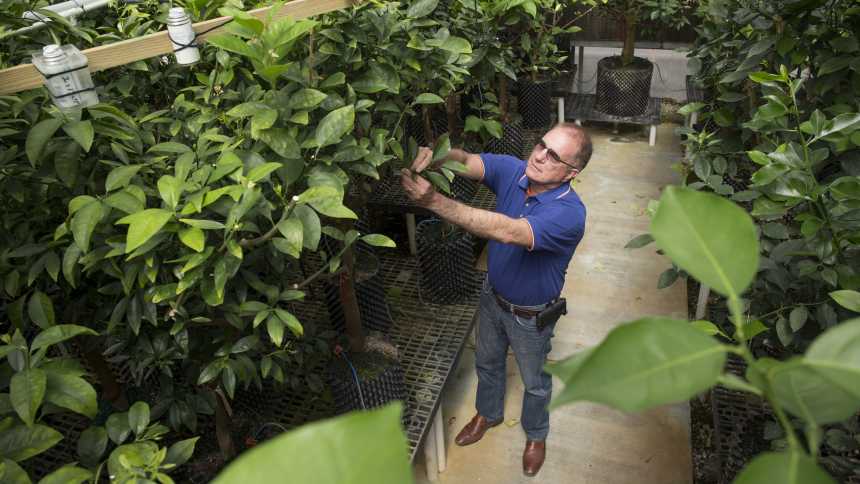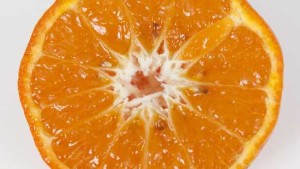Genetic Markers Point Way To Breeding Better Mandarin Oranges

Scientist Fred Gmitter examines citrus trees in a greenhouse at the UF/IFAS Citrus Research and Education Center in Lake Alfred.
Photo by Tyler Jones
In a newly published study, University of Florida scientists reveal success in their mission to find genetic markers for fruit quality traits that will be useful in future cultivar-breeding efforts to develop superior mandarin oranges.
Fred Gmitter, a UF/IFAS horticultural sciences professor, and his colleagues, including doctoral student Yuan Yu, wanted to know whether, for example, genetic markers for qualitative and quantitative traits in one group of mandarins lined up with these traits in other mandarins. Qualitative traits would be such things as peel or flesh color, while quantitative traits would include weight, size or shape.
In this study, the markers developed in one mandarin family predicted the fruit quality traits in 13 other unrelated varieties, Gmitter said. Without this process, researchers might have had to plant and grow 250 or more trees to maturity — a process that takes several years — to find a single one that has all the genetic characteristics they want in a new variety, Gmitter said.

‘7-6-27’
Photo by Tyler Jones
Last year, UF/IFAS released the mandarin cultivar currently known as ‘7-6-27,’ which researchers say is soaring with interest, and with more than 100,000 trees already ordered.
The study’s findings translate to good news for consumers and growers.
“Better fruit for consumers, from Florida growers, for a longer period of time,” Gmitter said. “Though growers will still have to wait for the new varieties to be selected, we will be producing even better ones than if we didn’t have these markers to use.”
The fruit might even be less expensive because it’s closer to the market – not importing from Spain or trucking them across the country from California, Gmitter said.









